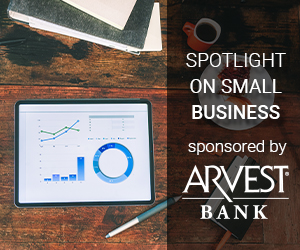The Supply Side: Pandemic disruption spurs innovation by retailers
by April 12, 2021 10:12 am 863 views

Research suggests that for all the pain the ongoing pandemic has dealt retailers, the sector has innovated and invested in meeting the challenges head-on. Research by consulting firm McKinsey & Co. found the disruption to the industry goes well beyond store closures.
McKinsey found 73% of consumers tried new shopping behaviors amid the pandemic that include purchasing new brands, shopping at new sites and retailers, and trying and relying on curbside pickup and delivery options.
When the pandemic hit in early 2020, food retailers saw only a tiny portion of overall sales from online or digital. That quickly changed, but not without loads of work behind the scenes.
In 2020, roughly 10.2% of $1.04 trillion in grocery sales were online. That was up 3.4% from 2019, according to a report from Mercatus. The marketing firm forecasts online grocery will swell to 21.5% by 2025, more than doubling its share.
Food retailers like Walmart, H-E-B and Target have reinvented much of the behind-the-scenes work to meet the pandemic demand. Walmart hired more than 500,000 workers for stores and supply chain logistics in the first six months of the pandemic and armed them with new technology to speed up the picking process and increase efficiency with order assembly. Walmart also worked to expand capacity for pickup slots. It expanded its express and next-day delivery services facilitated by 3,000 of its stores used as fulfillment centers for online orders delivered in two hours.
The retailer recently launched subscription service Walmart+ that includes fuel savings of 5 cents per gallon, scan-and-go for in-store shopping and mobile pay. Members also get unlimited delivery of online orders, including grocery, without any additional fee. Walmart+ costs $98 per year or $12.95 per month. Walmart CEO Doug McMillon has said the company focuses on customer experience, not subscriber numbers, as it grows the membership program.

San Antonio-based H-E-B is a grocery competitor to Walmart in Texas and also was able to innovate as the pandemic hit last year. Within the first two weeks that COVID hit south Texas, H-E-B launched a senior support line that allowed senior citizens to phone in their orders for food and essentials.
“Through this same-day service, a ‘Favor Runner’ would personally shop all orders at H-E-B and deliver directly to the customer’s doorstep within just a few hours,” said Jag Bath, Favor CEO and H-E-B chief digital officer. “To further promote social distancing, Runners leave all orders placed through the senior support line at the customer’s doorstep, eliminating close personal interaction.”
The retailer also waived delivery fees for the first 30 days of the service. Bath said the company also provided tutorials to teach customers how to use the online ordering system, and within a few weeks, a new demographic was successfully ordering online. H-E-B owns the Favor Delivery service that competes with Instacart, Target-owned Shipt, and other third-party delivery platforms.
Target also has been an innovator during the pandemic. The retailer saw a 500% increase in curbside pickup year-over-year as online orders became the norm for many consumers primarily because of the Shipt business the retailer bought before the health crisis. Analysts said having Shipt benefited Target during the pandemic.
“Target is operating on all eight cylinders,” said Craig Johnson, founder of Customer Growth Partners. “And if they had more cylinders, they’d be operating on those as well.”
The speed at checkout and also contactless payments options worked to benefit Target. The retailer set up MyCheckout devices around the store to allow customers to avoid standing in crowded lines.
Target also reached back in its playbook and pulled out the store-within-a-store concept earlier this year. The retailer has expanded its relationship with Apple to roll out 17 revamped Apple stores within Target locations by the fall. Target is teaming up with Ulta Beauty for 100 mini-stores announced this past fall. The retailer is also amid a 100-item in-store and online promotion with supplier Levi’s. The partnership goes beyond jeans into kitchen, pets and denim-inspired accessories, according to a press release.
Analysts also salute Ulta Beauty for scaling its GLAMlab virtual try-on experience on the mobile app amid the pandemic. It also entailed deploying 80 in-store beauty advisers to support the digital innovation employees.
The GLAMlab, a virtual beauty program, also added a skin analysis tool and artificial intelligence-powered tools for hair, eyelashes and foundation matching. The Ulta app allows consumers to try 7,000 brands. Ulta reports usage of the app increased nine-fold during the pandemic. When stores reopened, the company said usage stabilized at seven times more than last year.
Nike also used the pandemic to recreate its business model to reclaim direct relationships with customers. After parting ways with Belk, Dillard’s and other retailers in recent years, Nike began to engage directly with consumers. It increased profit margins by cutting out the markup from intermediaries. Nike said sales through its stores and website have grown by double digits every year, including an 83% spike in apparel’s digital sales in 2020.
During the pandemic, Nike connected with customers digitally through free training videos on YouTube. It made its Training Club app free, acquiring 25 million new members in the fiscal fourth quarter. It also launched Nike Experience on the app, which connects members in some cities for weekly activities, such as in-store workshops and events hosted by local athletes and sports influencers.
EDITOR’S NOTE: The Supply Side section of Talk Business & Politics focuses on the companies, organizations, issues and individuals engaged in providing products and services to retailers. The Supply Side is managed by Talk Business & Politics and sponsored by Propak Logistics.
